For individuals to lead a healthy and happy life, our scriptures have recommended certain dietary norms. Everyone should consume sattvik (Sattva-predominant) Bharatiya Hindu food items prepared at home. They are fresh, easy to digest and also help maintain good physical, mental and spiritual health. The modern day diet, however, ignores these norms and propagates the Tama component. The biggest drawback of consuming fast-food or junk-food is that, the individuals who regularly consume such items that are Tama-predominant and that attract black (distressing) energies, become victim of the distress due to negative energies. Let us read this article and find out why Hindu food items prepared as per Bharatiya methods are considered sattvik.
1. Hindu Food items prepared according to the Hindu (Bharatiya) method
The ancient sciences, including the science underlying diet is superior to the present science being propounded, because it has given due thought to the time factor. Hindu Dharma does not consider any component, be it Sattva, Raja or Tama, as prohibited or inferior.
Hindu Dharma has mentioned in the Ayurveda which food should be consumed during which time or season as per the nature of the triguna present in the ingredients of Bharatiya diet. Hence, the ancient science is anytime superior to the present science; because it has given a thought to the time factor.
2. Why the Hindu food items prepared according to the Hindu method are sattvik?
The Tama component in the fast-food increases because of its ingredients and the method of cooking. Similarly, it also attracts black energy. On the contrary, Bharatiya methods of cooking and the ingredients used in them are sattvik and hence, the food also becomes sattvik.
3. Analysis of some Hindu food items in Bharatiya diet
A. Modak
-
Since the proportion of Anand (Bliss) in modak is more, Anand is experienced upon looking at it : Proportion of Anand in the modak is more. Hence, the vibrations of Anand are immediately experienced upon looking at it. Sattva component in the steamed modak is more, whereas Raja component is more in fried modak.
-
Comparison between steamed modak, fried modak and modak made from khava procured from the market : Steamed modak has active Vayutattva (Absolute Air Principle) in it, whereas fried modak has Tejtattva (Absolute Fire Principle). Steamed modak emits vibrations related to Anand and Shakti (Divine Energy) and increases Sattva component in the individual consuming it, whereas fried modak emits vibrations related to Shakti and increases Raja component in the individual consuming it. Modaks prepared from khava procured from market emit Shakti to a lesser extent and also increases Tama component in the individual eating them. This Shakti is Tama-predominant. Thus, even though the dishes may seem the same, the vibrations vary because of the different methods of cooking them.
B. Characteristics of anarsa
-
This is a mixture of rice and jaggery; hence, it is Sattva-Raja-predominant. Due to its Sattva-based characteristic, the waves of Shrivishnu are attracted to it; whereas, due to the Raja component, the kriya-shakti of the universe is also attracted and congregated in it.
-
The sweet taste in anarsa has the ability to attract the Apatattva oriented Sattva component from the universe. Similarly, the mesh like shape created in the anarsa has special importance. The sweet fragrance emitted by this mesh like shape has the ability to attract and hold the waves of Shrivishnu Principle from the universe. Through the offering of this dish, the benevolent act of purification of the subtle-body is also achieved.
- Consumption of anarsa during the Adhikmas is beneficial for increasing Sattva-Raja components.
4. Why is the Naivedya of gharga and vada offered during Anantpujan?
-
Unique aspect of a pumpkin : The Apatattva (Absolute Water Principle)-predominant juicy quality in the pumpkin provides momentum to the kriya-shakti (Energy of action). Similarly, the subtle-air sheaths in the pumpkin congregate the kriya-shakti from the universe in itself.
-
The reason for offering a pumpkin gharge and vada as Naivedya in Anantpujan : The waves of kriya-shakti active in the premises of worship can be imbibed within a short period in gharge and vada prepared from pumpkin. Upon consuming Prasad (Holy sacrament) charged with such kriya-shakti, a similar atmosphere complementary to strengthen the body is created.
Reference : Sanatan Sanstha’s Holy text ‘Dietary norms and deficiencies in modern diet’

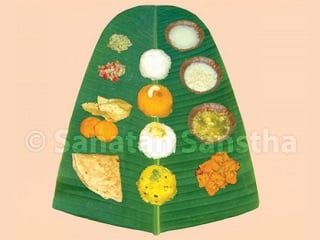
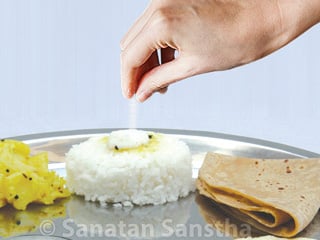 Why use of salt should be restricted ?
Why use of salt should be restricted ?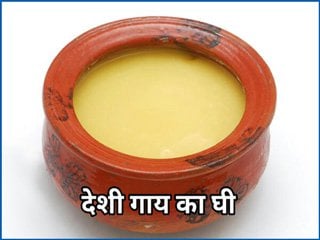 Cow’s milk and the ghee made from Cow's milk
Cow’s milk and the ghee made from Cow's milk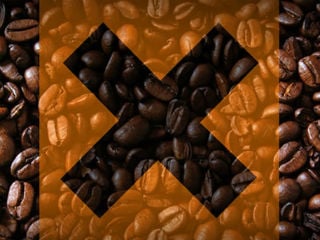 Harmful side effects of Coffee and Tea
Harmful side effects of Coffee and Tea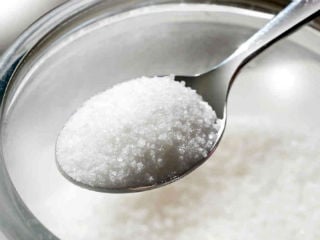 Ill effects of Sugar upon its excessive consumption
Ill effects of Sugar upon its excessive consumption Ill effects of Junk Food, Fast Food and Chocolate
Ill effects of Junk Food, Fast Food and Chocolate Pesticides in food, its ill-effects and remedies
Pesticides in food, its ill-effects and remedies